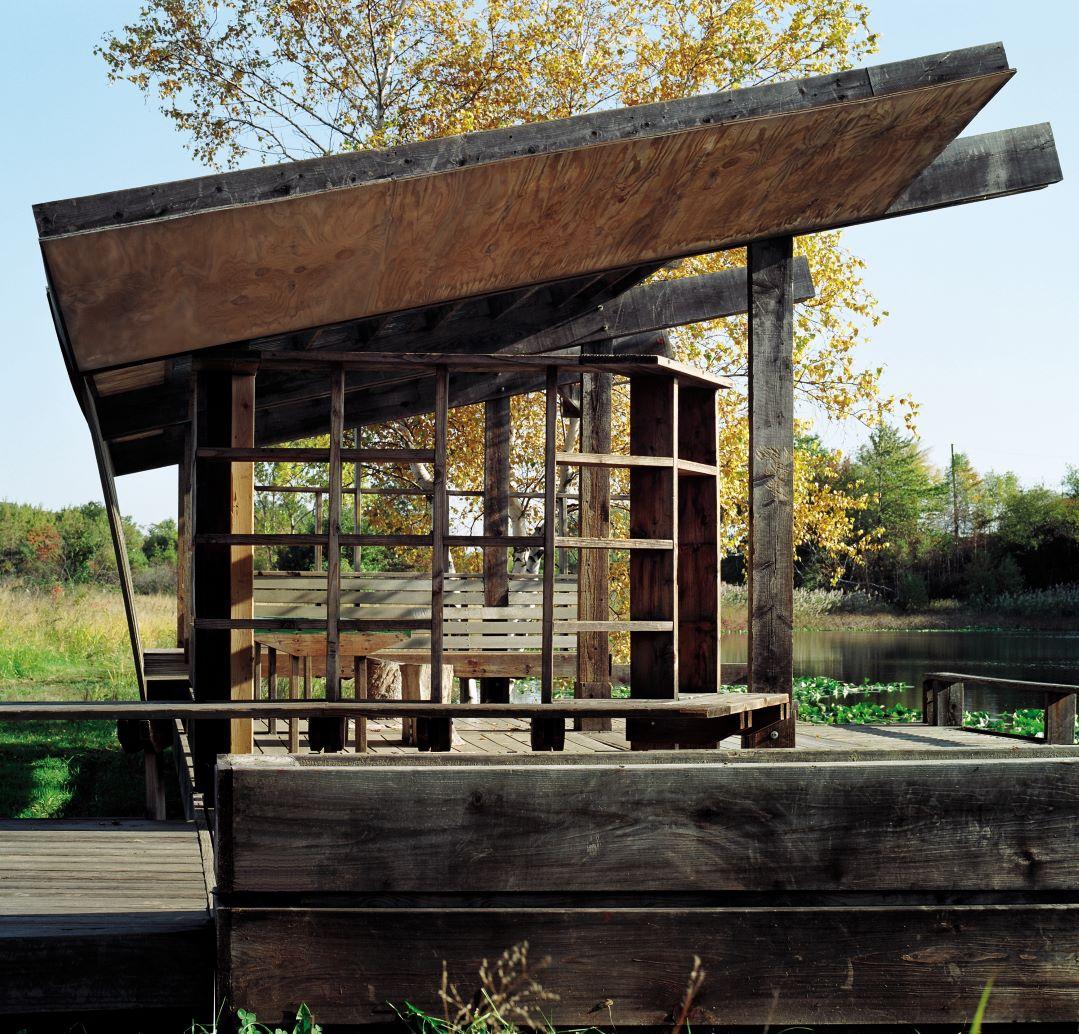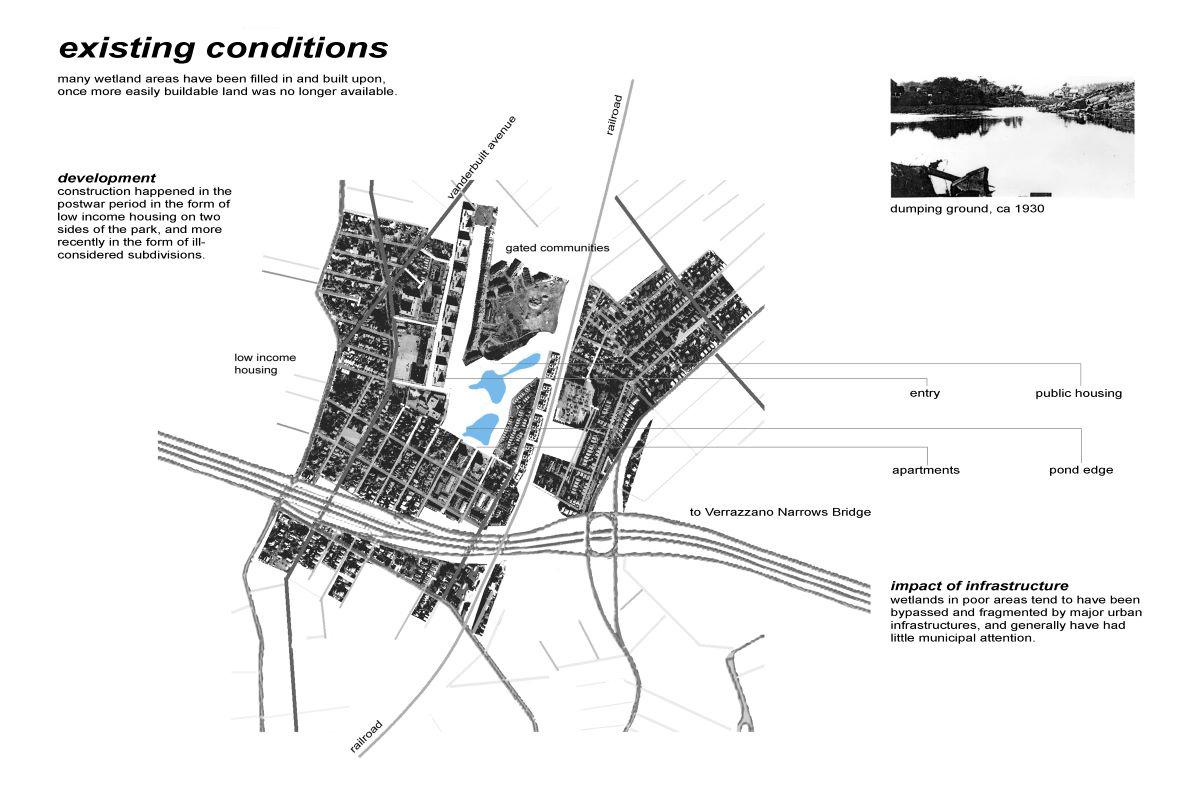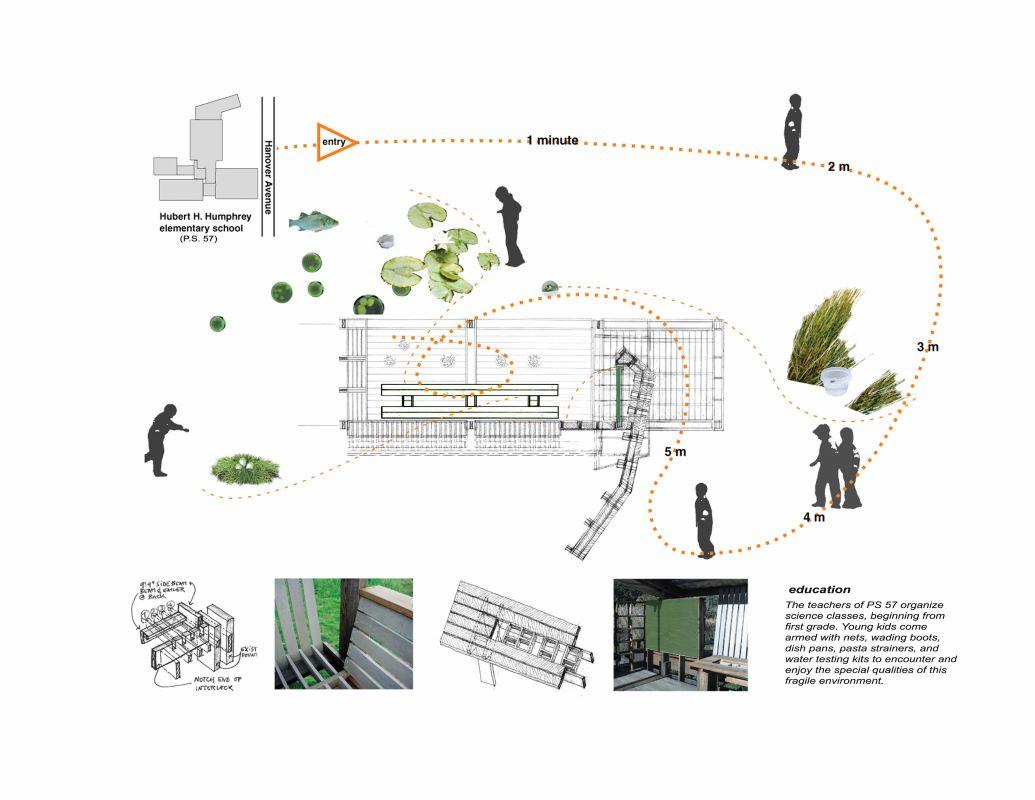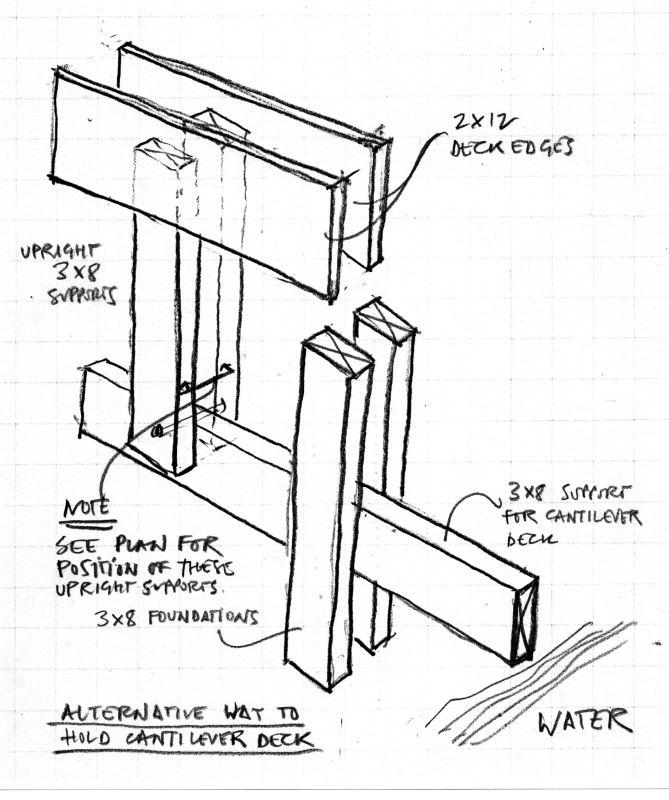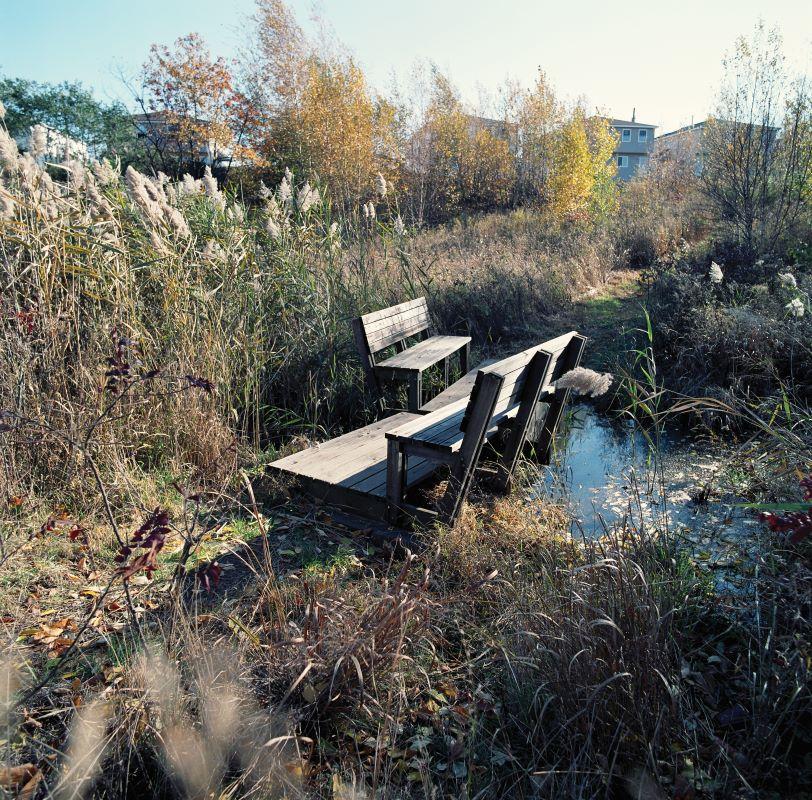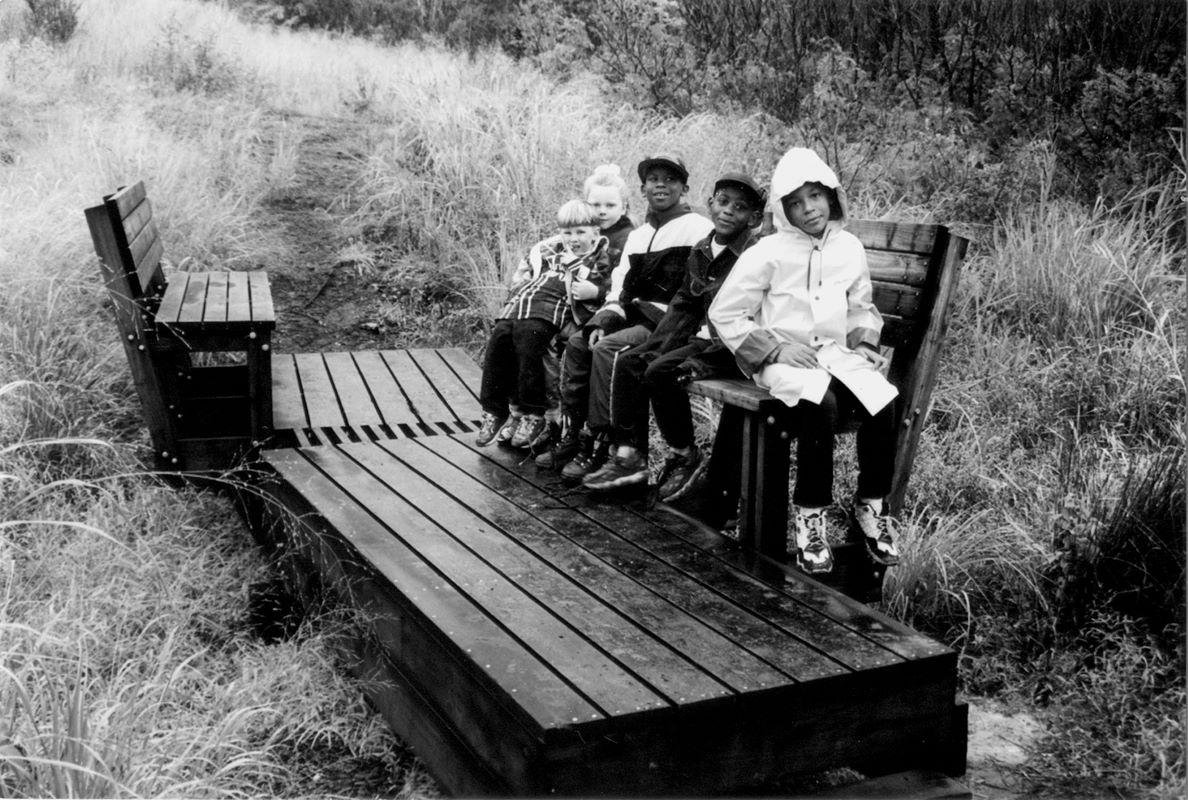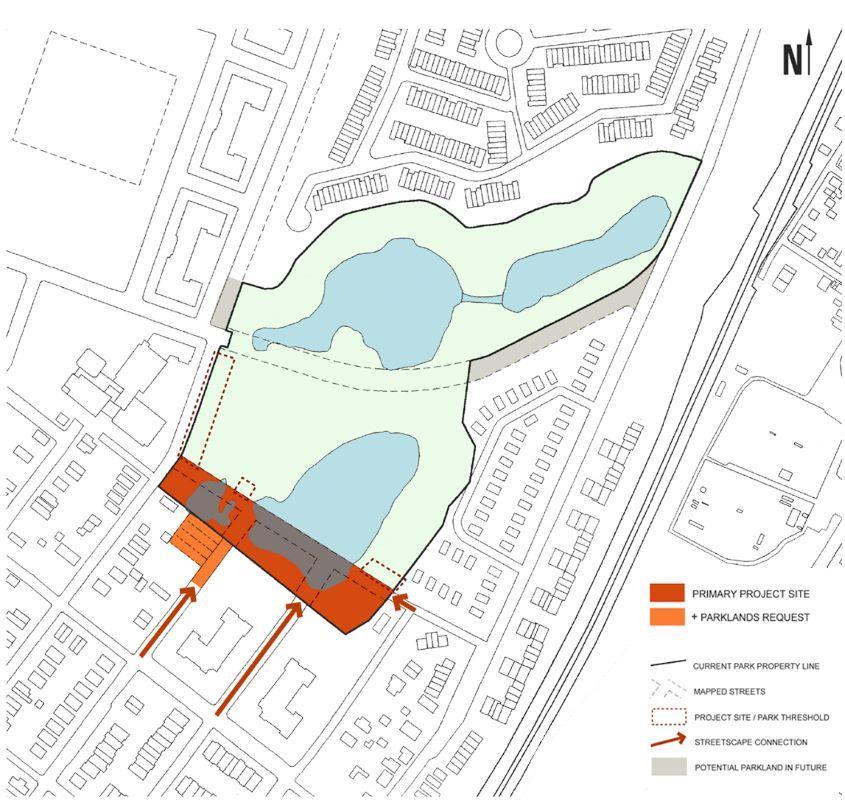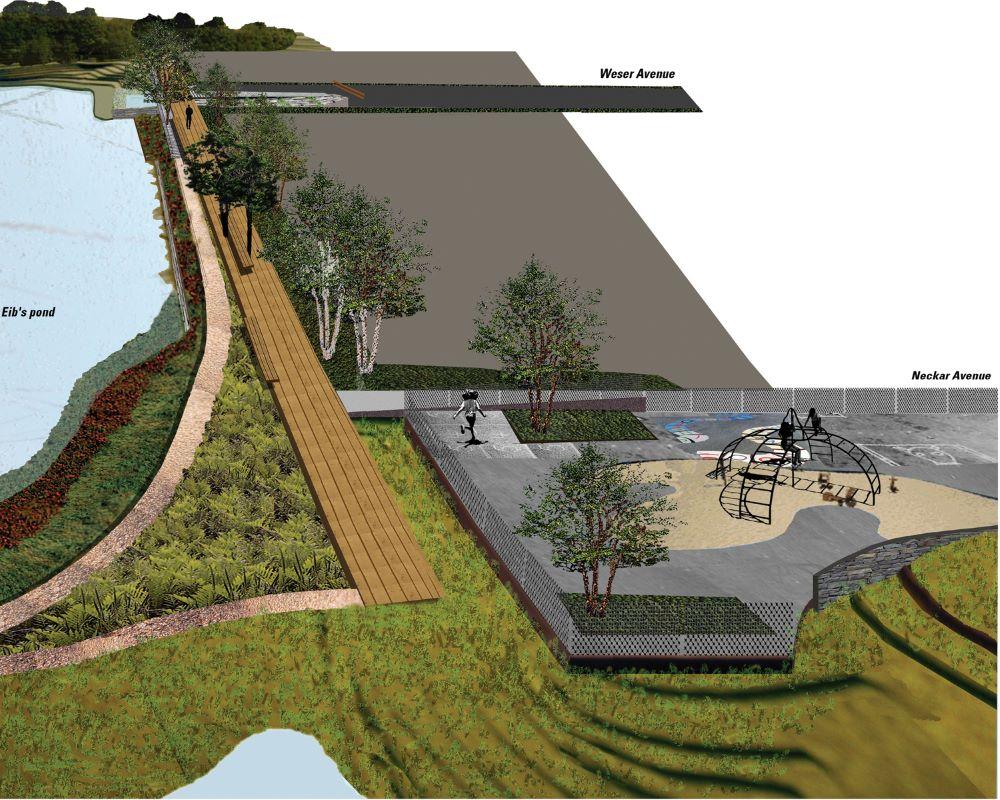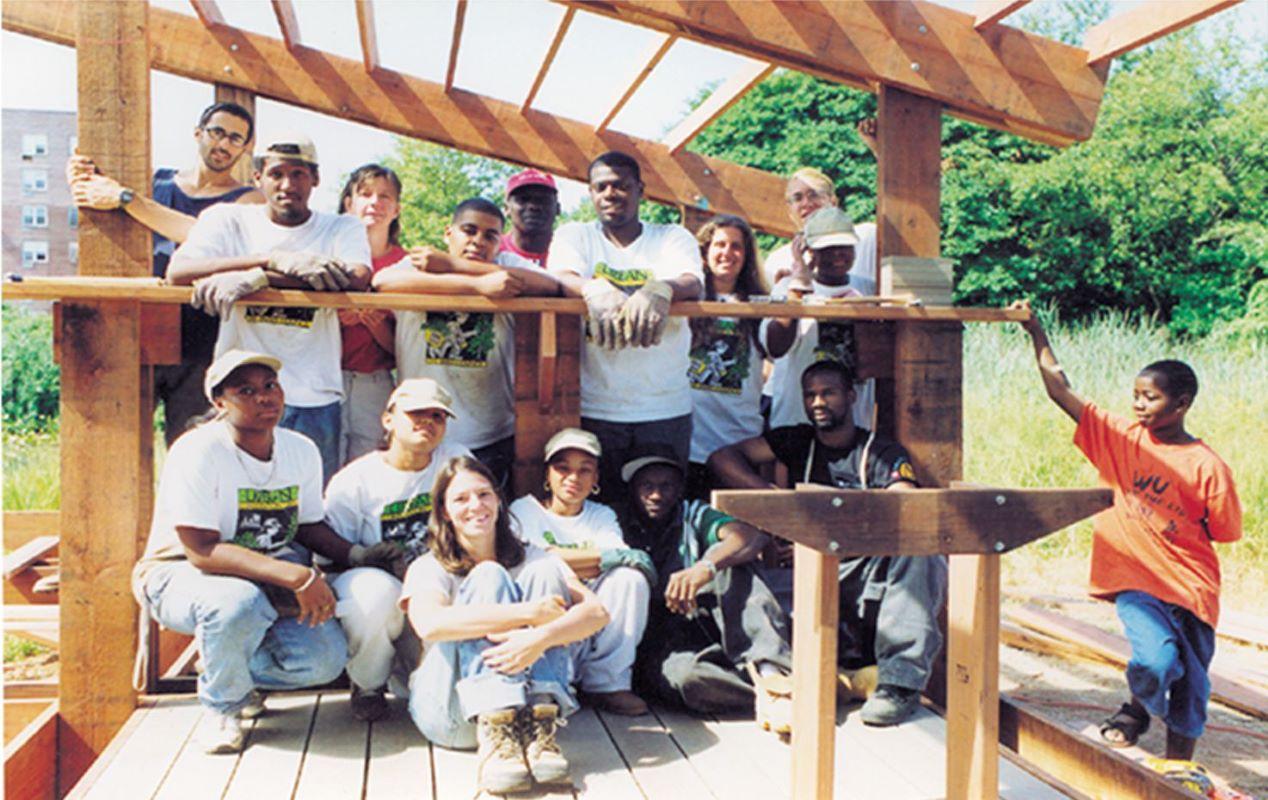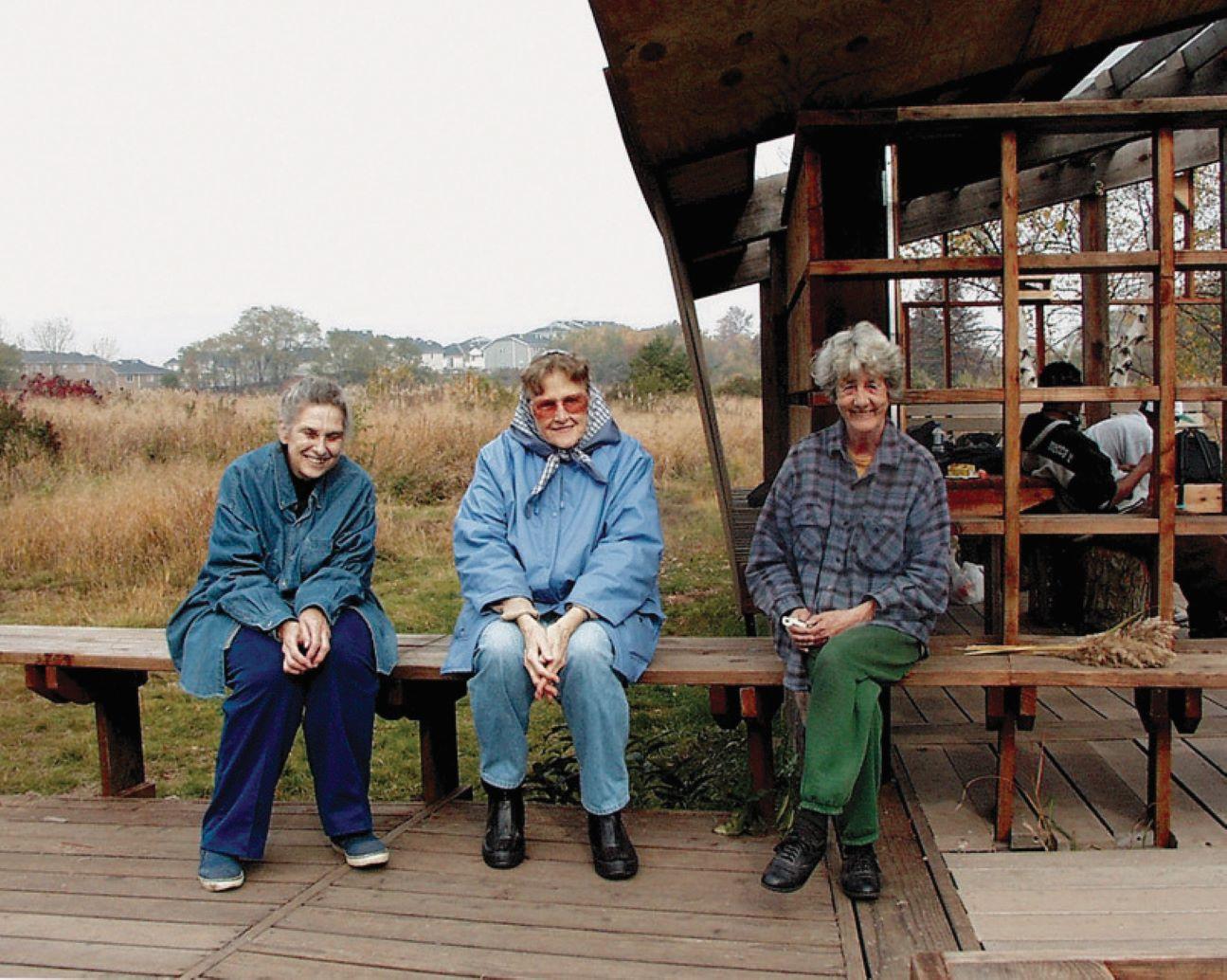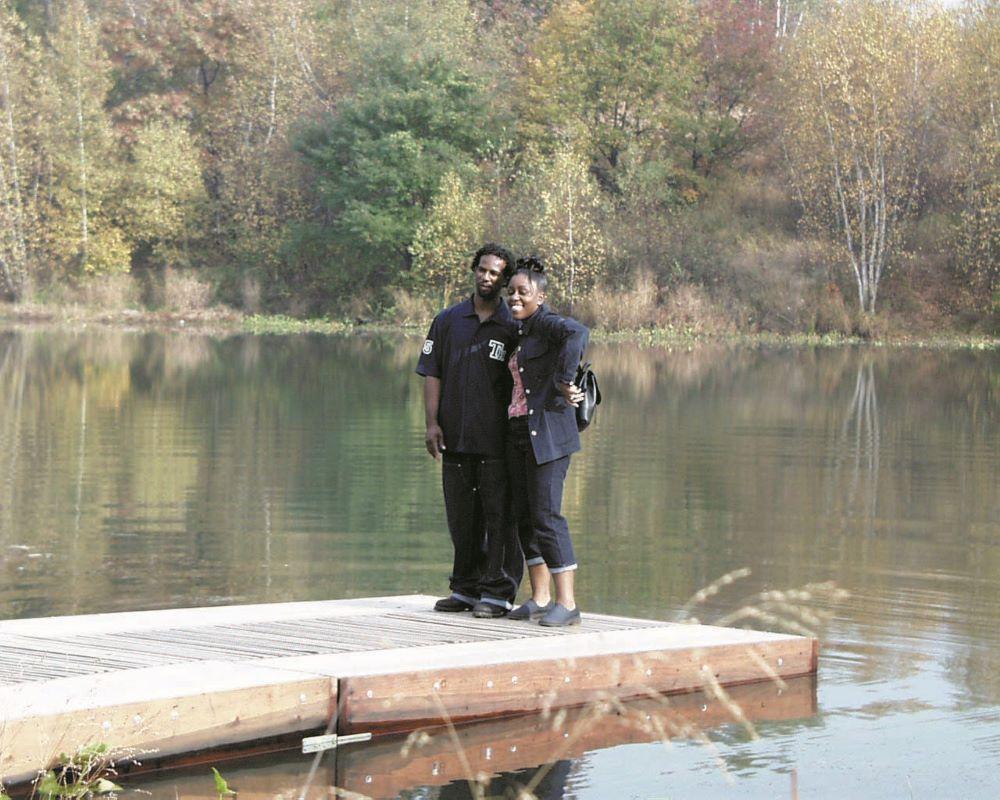Eibs Pond Park
Staten Island, NY
Restoring the boundary of an urban wetland through circulation, programming, and stormwater management
Squeezed between a railway line, expressway, and low-income housing blocks, the 17-acre wetland that is now Eibs Pond Park survived decades of deforestation, erosion, and dumping. In a multi-phase project in collaboration with public organizations, MPA helped to reconnect surrounding communities to the park, the watershed, and to each other. The Strategic Plan for Eibs Pond Park identified two sets of thresholds: that between city and park, and that between land and water.
The Thresholds Project undertaken with the Design Trust for Public Space negotiates the site’s ecologically-disturbed southern boundary, where park trails and city sidewalks dead-end, overcome by invasive plants, eroded topography, and accumulated debris. MPA employed strategies of stormwater management, increased visual and physical access, and edge programming to redefine the notion of perimeter control, in support of access and walkability. The project integrates urban, social, and ecological issues with the restoration of a degraded wetland, transforming a disused site into a valuable community resource.
Design
Concepts
The project at Eibs Pond Park was approached as a stage of gradual interventions to reestablish the park as a positive public amenity. Situated in Staten Island on top of a freshwater wetland, the park experienced severe ecological deterioration as it was used as a dumping ground for trash since the 1930s. To reanimate the disused park, MPA completed three phases of interventions- the bridge, the classroom, and Thresholds. Across all three phases MPA was able to realize the site’s potential as a wildlife refuge, environmental education center, and neighborhood gathering place.
Elements
Classroom
MPA used a birch tree located on the pond’s edge as an anchoring point for the design of the outdoor classroom at Eibs Pond. Made out of recycled plastic lumber, the classroom’s framing appears like a building without exterior cladding; the horizontal and vertical wood elements create different degrees of transparency as one looks through the classroom. The floating dock that extends into the pond allows users to observe the changing tide as it moves up and down at different times of the day. To support science classes, the table in the center of the classroom features cutouts where students can place and observe their findings from the park.
Bridge
Before the project at Eibs Pond Park, visitors had no way to navigate this marshy landscape safely. The addition of pedestrian pathways created a new way to explore the park. The bridge is a raised part of the walkway that provides a moment of rest along the path, acting as a hinge between the two bodies of water. The cantilevered benches face opposite directions to reveal contrasting views of the ponds.
Thresholds
The Eibs Thresholds project redefined the urban edge of the park by creating pedestrian pathways on both sides of the pond. Previously, the southern boundary was overwhelmed by invasive plants, eroded topography, and debris. The design for the new park edge combats stagnant water retention, controls invasive phragmites, and incorporates a new boardwalk made from recycled plastic lumber. This intervention transforms the park’s relationship with the adjacent apartment complex from negative to positive, introducing a new programmatic component for the neighborhood with the new walking paths. A set of filtering wetland basins lead down towards a filtration pond at the old street edge, ensuring that rain water is processed and purified before entering the pond.
Education and Community
The classroom at Eibs Pond was constructed in collaboration with a crew of AmeriCorps youth as part of their program that sponsors higher education. MPA visited the site weekly as it was being built, using on-site sketches and a scaled physical model to aid the construction process. Eibs Pond Park is located within walking distance from Staten Island’s Public school 57, which became the main social activator of the outdoor classroom once it was complete. MPA designed a path between the school and the classroom, allowing for easy access to the park for science classes and recreation. After the project’s completion, MPA’s interventions at Eibs Pond Park became facilitators of numerous multi-generational activities including P.S. 57 science classes, reunions between old friends, and even a wedding for the head of the AmeriCorps crew.



